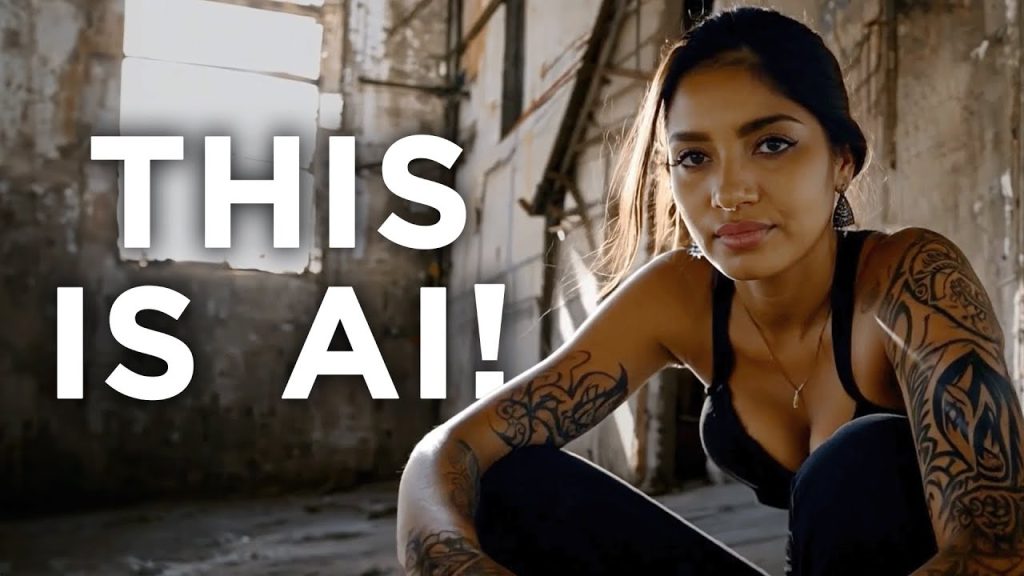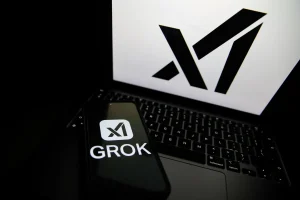AI Generators Leap Forward: Usable Innovations Unveiled

Strap in because AI technology is taking giant strides, especially in video generation. The recent announcements have been nothing short of revolutionary—these are tools you can actually use, not just flashy demos. From video creation to custom fonts and interactive web elements, the future of AI-driven creativity is here and now.
While most announcements are just that—announcements—this week’s revelations bring immediately accessible tools that promise to change the game across multiple industries. Whether it’s generating realistic videos, crafting custom fonts, or even creating sound effects automatically, these developments mark a significant moment in AI technology.
Anthropic’s Sonet 3.5: The New AI Competitor
A major highlight this week is the introduction of Sonet 3.5, an AI model that’s causing a buzz for its innovative feature called artifacts. Rather than just writing code like other models, it can now run the code in an extra interface window. This capability is revolutionary and puts it ahead of many competitors.
Available for free, Sonet 3.5 allows users to generate interactive previews with just a few prompts. For example, creating a portfolio website for a designer isn’t just about writing the code; it allows you to interact and even build custom games with animations within the preview. It even generates sound effects.
This new development marks the beginning of an ‘agentic’ future where AI doesn’t just assist but performs tasks. The excitement around Sonet 3.5 is well-deserved as it’s not merely an announcement but a fully accessible tool that users can experiment with right away.
Runway’s Gen 3: Transformative Video Generation
Runway has introduced its new video generation model, Gen 3, which promises to blur the lines between reality and simulation. Although not yet available to the public, the demonstrations showcase significant leaps in quality and usability compared to their previous model, Gen 2.
The improvements are evident when comparing outputs from Gen 2 and Gen 3 using the same prompts. Gen 3 offers stunning, realistic videos with temporal consistency, making it a game-changer for industries seeking advanced video creation tools.
While Gen 3 isn’t ready for public use yet, its capabilities hint at a future where creating realistic video content could become as simple as typing a prompt. This advancement could revolutionize fields from advertising to filmmaking.
Luma Labs’ Dream Machine: Accessible and Versatile
Luma Labs’ Dream Machine is making waves with its ability to generate stunning video content. This tool allows users to create everything from fashion ads to documentary footage without needing high-end equipment or complicated setups.
Users have been experimenting with various applications of Dream Machine, such as animated memes and even attempts at creating short films. Though not perfect, the tool shows promising capabilities, particularly in animating static images into videos.
One highlight is its ease of use. Even those with no technical background can generate high-quality video content. As AI video generation continues to evolve, tools like Dream Machine make professional-grade content creation accessible to everyone.
Corsel’s Suite of Free AI Tools
Corsel offers a suite of generative AI tools that can be used directly in your browser for free. Their tools cover a wide range of functionalities from text generation to image creation, all easily accessible.
One standout feature is the ability to switch between various AI models depending on the task, whether it’s generating realistic images or writing in a specific tone. Users can also make use of features like inpainting and generative expansion for more detailed work.
Corsel’s tools are designed to be user-friendly, allowing even those with minimal experience to create professional-quality outputs. With an API, these tools can also be integrated into other applications, making them versatile solutions for numerous tasks.
Google Labs’ Gen Type: Custom Font Generation
Google Labs has rolled out an experimental tool called Gen Type, which allows users to generate custom fonts. This tool, accessible through Google’s platform, can turn simple text inputs into fully customized alphabets.
Although somewhat niche, this tool is a boon for creatives and designers looking to add a unique touch to their projects. Users can generate alphabets suited to various themes, making personalized communication easier than ever.
While it lacks some features like background removal, Gen Type is an exciting step forward in AI creativity. Simple and fun to use, it opens new possibilities for design projects, whether for professional or personal use.
Leonardo’s Model Phoenix: Enhanced Image Generation
Leonardo has unveiled Phoenix, its latest image generation model, which is designed to improve upon its predecessor in several key aspects like prompt adherence and coherence. The advanced model delivers high-quality, consistent results, making it ideal for business applications.
One of the standout features of Phoenix is its prompt enhancement capability, which rewrites user inputs to produce better outputs. This allows for more accurate and detailed image generation, especially useful for marketing materials and creative projects.
Compared to previous models, Phoenix offers a higher level of detail and better texture alignment. This makes it an invaluable tool for professionals looking to create polished, high-quality visuals without extensive manual tweaking.
The Creative Potential of AI Tools
With the multitude of AI tools now available, the creative possibilities are nearly endless. A recent challenge demonstrated this by having participants create fully AI-generated music videos—from the songs to the visuals—showcasing the versatility of current AI technology.
The winning entries ranged from educational videos about squids to more storytelling-driven pieces, highlighting the flexibility and creative potential of these tools. This is just the beginning of what AI can offer in the realm of creative content.
While some people worry about AI replacing creativity, these tools are proving that they can actually enhance the creative process. By taking over tedious tasks, AI allows creators to focus on storytelling and the conceptual aspects of their projects.
11 Labs Video Sound Effects: Adding a New Dimension
11 Labs has introduced a new tool for generating sound effects for videos, further simplifying the video production process. The tool analyzes video content and auto-generates appropriate sound effects, streamlining the post-production workflow.
Though not perfect, the tool is a significant step forward in automating sound design. It can analyze elements within the video, such as keystrokes or background noises, and provide corresponding sound effects to enhance the viewer’s experience.
With an API for easy integration into other projects, 11 Labs’ sound effects tool can be part of a broader AI-powered production pipeline. This innovation could save creators a lot of time and effort, making it easier to produce professional-quality videos.
To sum it up, the advancements in AI technology are not just theoretical anymore; they are practical tools ready for diverse applications. From generating interactive code previews to crafting realistic videos, custom fonts, and precise sound effects, the possibilities for creativity and productivity are expanding rapidly.
Each of these AI tools brings something unique to the table, making it easier for users across different fields to experiment and innovate. The future of AI is not about replacing creativity but enhancing it, enabling users to push the boundaries of what’s possible.
As these technologies become more accessible and user-friendly, we can expect even more exciting developments on the horizon. The innovations we are seeing today are setting the stage for a new era of creative and practical AI applications.





